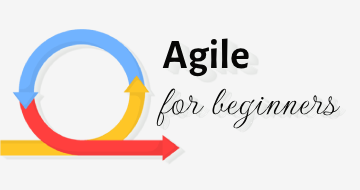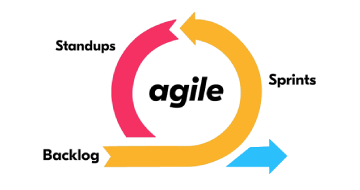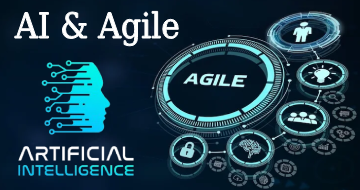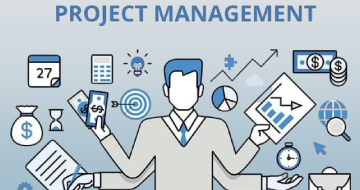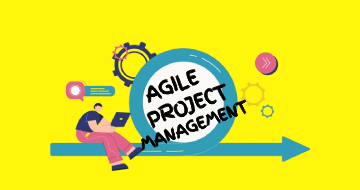Agile Project Management by Coursera
Course Highlights
- Define what a root cause analysis is.
- Explain what a user story is and justify why they are powerful for capturing requirements in complex projects.
- Describe the concepts behind the 3 Cs, DEEP, and INVEST in Agile Scrum.
Skills you will learn!
Curriculum
4 Topics
Promotional Video
Introduction to the Power of Scrum
Agile Scrum Recap
Full Course Resources
6 Topics
How to Perform a Root Cause Analysis
How to Communicate the Benefits of Scrum
How to Host a Kick-Off Meeting and Definition of Done
How to Improve from the Start
The Importance of a Good Initiation
Summary: Kicking Off a Project
5 Topics
How to Establish Stakeholders
Examples of Stakeholders
Importance of Stakeholders at Sprint Review
Summary: Establishing Stakeholders
Assessment 1
6 Topics
Introduction to Scrum Roles
Characteristics of a Scrum Master
Characteristics of a Product Owner
Characteristics of a Development Team
The Value of Knowing the Roles
Summary: Scrum Roles - Understanding the Characteristics of Each Role
9 Topics
Introduction to User Stories
How to Write User Stories and Acceptance Criteria
How to Organize Stakeholder Meetings
How to Find Common Ground on Requirements
How to Manage Changing Requirements
The Importance of Prioritizing the Backlog
How to Capture Stories in Meetings
Estimating Story Points
Summary: Building the Product Backlog
13 Topics
Introduction to Sprint Planning
How to Manage Impediments to Planning
How to Prepare for Sprint Planning
The Sprint Planning Meeting
How to Prepare Artefacts Needed for Planning
How to Craft the Sprint Goal
First Half of the Meeting
How to Estimate User Stories
Second Half of the Meeting - The How
How to Use Velocity
What is the Outcome of Sprint Planning
Summary: Sprint Planning
Assessment 2
8 Topics
Introduction to Release Planning
How to Set a Release Goal
How to Decide on Scope-Driven Versus Date-Driven Release
How to Prioritize for the Release
How to Use Average Velocity and Calculate the Number of Sprints in Release
How to Run a Release Planning Meeting
How to Use the Release Burn Down
Summary: Release Planning and Using Velocity
13 Topics
Introduction to the Sprint Lifecycle
How to Choose Sprint Length
What Is the Frozen Sprint Backlog
Teamwork on Tasks
How to Remove Impediments
How to Carry Out Product Backlog Grooming and Estimation
Avoiding Carry Over
How to Run the Daily Scrum
How to Use the Sprint Burndown
How to Run the Sprint Review
What Is the Potentially Shippable Increment
How to Run the Sprint Retrospective
Summary: The Sprint Lifecycle: Daily Scrum Sprint Review and Retrospective
3 Topics
Welcome to Your Agile User Stories Training
Agile Recap
Assessment 3
3 Topics
Learning Objectives: Understanding the Shift from Traditional Requirements to User Stories
The History: Traditional Requirements Documents
The Birth of User Stories
3 Topics
Learning Objectives: Mastering User Stories with INVEST and the Three Cs
The INVEST Principle
The Three Cs Formula
4 Topics
Learning Objectives: Fundamentals of Writing and Capturing User Stories
How to Write a User Story Description
How to Write Acceptance Criteria
Assessment 4
3 Topics
Learning Objectives: Organizing User Stories with Epics and Themes
What Is an Epic
What Is a Theme
4 Topics
Learning Objectives: Effective Techniques for Splitting and Combining User Stories
When to Split User Stories
How to Split User Stories
Assessment 5
2 Topics
Learning Objectives: Summarizing Key Concepts and Planning Your Agile Journey
Course Wrap-Up: Putting User Stories into Practice
1 Topic
Welcome to Project Deadline Training - Project Delivery with Agile Scrum
10 Topics
Learning Objectives: Project Deadline Concepts
Table of Contents - How to Meet a Project Deadline with Scrum
How to Meet a Project Deadline
Importance of Requirements Being Ready
Importance of Committing with Confidence
How to Use the Concept of Buffer to Deliver Tasks on Time
How to Use Empirical Evidence for Timely Delivery
How to Improve Communication to Deliver on Time
How to Improve Delivery by Getting a Kick Out of Delivering on Time
How to Use the Retrospective to Deliver on Time
9 Topics
Learning Objectives: Project Deadline Pro Tips
The Importance of the Scrum Guide
How These Scrum Rules Help You with Project Delivery
How to Leverage the Scrum Framework
Use the Concept of the Agile Toolkit
How to Leverage the Team
How Respect Helps You Deliver on Time
How Common Sense Helps You Deliver on Time
Assessment 6
11 Topics
Learning Objectives: Project Deadline Checklists
Introduction - How to Improve Project Delivery with Scrum Checklists
The Scrum Master Checklist
The Product Owner Checklist
The Development Team Checklist
The Kickoff Meeting Checklist
The Product Backlog Grooming Checklist
The Sprint Planning Checklist
The Daily Scrum Checklist
The Sprint Review Checklist
The Sprint Retrospective Checklist
3 Topics
21 Tips for Effective Product Backlog Management in Agile Scrum
Agile Scrum Recap
Introducing User Stories and Product Backlog
4 Topics
What Is a Product Vision
How to Create the Product Vision
What Is a Vision Board
Assessment 7
12 Topics
Product Backlog Management
Introduction to User Stories and Acceptance Criteria
Step 1: Convert All Ideas into User Stories
About User Stories
What Is DEEP?
What Is the INVEST Principle
Step 2 - Prioritization
The Importance of Prioritizing the Backlog
Step 3 -Estimate the Product Backlog
How to Carry Out Product Backlog Grooming and Estimation
Estimating Story Points
Step 4 - Refining and Grooming Your Product Backlog
9 Topics
Introduction: Tips and Strategies
How to Capture Stories in Meetings
Tip #1: PO Should Know that They Will Be Expected to Present Enough Work
Tip #2: Avoid Scheduling Backlog Refinement
Tip #3: The Backlog Items Must Be Fine-Grained and Properly Understood by the PO
Tip #4: Treat Every Backlog Refinement Meeting Just Like the Beginning of Sprint
Tip #5: Everyone Should Understand that Estimates Are Provisional
Tip #6: Strive to Optimize Your Time During the Meeting
Tip #7: Remember that Backlog Items Are Actually a Collaboration Between the PO
9 Topics
How to Manage Changing Requirements
Tip #8: Keep Your Eye on the Goals of the Meeting
Tip #9: Get Volunteers for Action Items for Any Unknowns or Big Risks
Tip #10: You are Definitely Free to Split User Stories During This Meeting
Tip #11: Everyone Should Understand that Product Backlog Order Is Provisional
Tip #12: Be Brave to Discuss a Couple of Items Farther Down the Backlog
Tip #13: Let the Dev Team Review the User Stories to Be Discussed about 24 Hours
Tip #14: Have a Mini Backlog Refinement Prior to Holding the Backlog Refinement
Assessment 8
10 Topics
How to Prioritize for the Release
Tip #15: Track Progress Using Release Burndown Charts
Tip #16: Feel Free to Introduce Late Breaking User Stories.
Tip #17: Use One Issue Tracker and One Backlog!
Tip #18: Watch Out for Too Many Changes and Limit Your Scope
Tip #19: Ensure to Experiment with the Amount of Refinement
Tip #20: Ensure to Retrospect Inspect and Then Adapt
Tip #21: Transparentize Prioritize and Stick to the Product Vision
Conclusion
Putting Agile Scrum Retrospectives into Practice
4 Topics
Confessions of a Scrum Master
Confessions of a Scrum Master: Lessons from the Field
Scrum Introduction and Recap
The Characters
9 Topics
Learning Objectives
Confession 1: Tools Versus People
Confession 2: Release-Planning Peril
Confession 3: Introduction to Scrum Gone Bad
Confession 4: Stand-Up Versus Sprint Review
Confession 5: Taking the Team to Task
Confession 6: Retrospective Regret
Confession 7: The Bloated Bug Backlog
Assessment 9
4 Topics
Kanban Guide - Learn How to Use Lean Kanban in Your Organization
Opening Credits
Overview
Introducing Kanban
4 Topics
Learning Objectives: Visualizing Your Workflow
The Kanban Board and Deciding on Your Workflow
Determining Priority
Understand the "Pull System"
3 Topics
Learning Objectives: Limiting Work in Progress
Establish Work in Progress Limits (W.I.P.)
Assessment 10
2 Topics
Learning Objectives: Measure and Manage Flow
Measuring and Managing Flow
3 Topics
Learning Objectives: Making Policies and Processes Explicit
Understand Toyotas Six Core Rules
Example of Creating and Refining a Process
2 Topics
Learning Objectives: Using Models to Recognize Improvement Opportunities
Overview of Models for Improvement Opportunities
15 Topics
Learning Objectives: Augmenting Kanban with Scrum
Scrum Recap
Sprint Planning: Introduction to Sprint Planning
Sprint Planning: The Sprint Planning Meeting
Sprint Planning: First Half of the Meeting - The What
Sprint Planning: Second Half of the Meeting - The How
Sprint Planning: What Is the Outcome of Sprint Planning
The Sprint: Introduction to the Sprint Lifecycle
The Sprint: How to Choose Sprint Length
The Sprint: Teamwork on Tasks
The Sprint: How to Run the Daily Scrum
The Sprint: How to Run the Sprint Review
The Sprint: What Is the Potentially Shippable Increment
The Sprint: How to Run the Sprint Retrospective
Assessment 11
3 Topics
Final Words and Next Steps
Closing Credits
Full Course Assessment
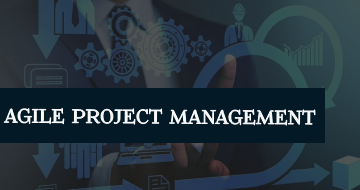
Agile Project Management
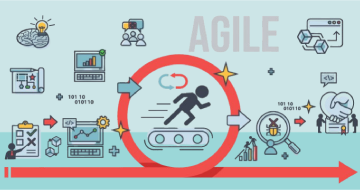
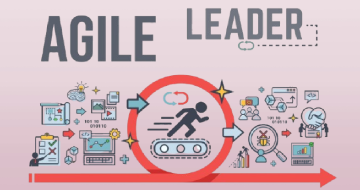
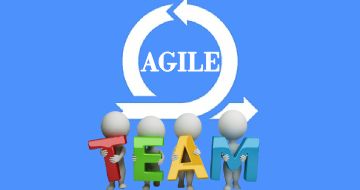


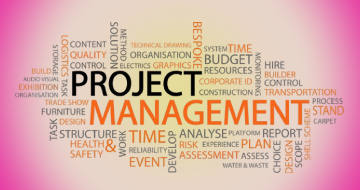
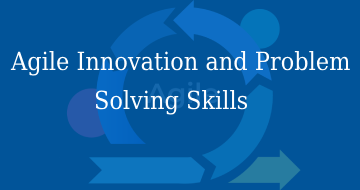

.webp)
